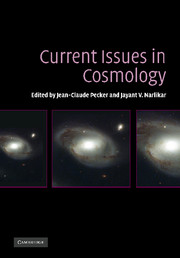Book contents
- Frontmatter
- Contents
- List of contributors
- Preface
- Part I Observational facts relating to discrete sources
- 1 The state of cosmology
- 2 The redshifts of galaxies and QSOs
- 3 Accretion discs in quasars?
- Part II Observational facts relating to background radiation
- Part III Standard cosmology
- Part IV Large-scale structure
- Part V Alternative cosmologies
- Part VI Evidence for anomalous redshifts
- Part VII Panel discussion
- Index
3 - Accretion discs in quasars?
Published online by Cambridge University Press: 15 December 2009
- Frontmatter
- Contents
- List of contributors
- Preface
- Part I Observational facts relating to discrete sources
- 1 The state of cosmology
- 2 The redshifts of galaxies and QSOs
- 3 Accretion discs in quasars?
- Part II Observational facts relating to background radiation
- Part III Standard cosmology
- Part IV Large-scale structure
- Part V Alternative cosmologies
- Part VI Evidence for anomalous redshifts
- Part VII Panel discussion
- Index
Summary
Abstract
This polemic considers the reality and implications of broad double-peaked Balmer, and super-broad asymmetric FeK alpha, emission lines in quasars. Current evidence suggest that both are rare. The lack of physical consistency and/or correlation in a disk model parameter space suggests little support for the claims that these lines arise from an accretion disk.
Introduction
Everyone knows that the central engine of a quasar involves accretion onto a supermassive black hole (SMBH). What else can it be? Especially if the Doppler interpretation of quasar redshifts is accepted and is correct. What else could the redshift be? This ideological approach to science is both good and bad. Without a paradigm research in this area would lack any focus or direction. Such anarchy is clearly out of favor. The danger, however, is that a paradigm can be confused as fact and efforts to explore, or even hypothesize, alternatives is discouraged and even suppressed. This tendency can be re-enforced in more ideologically oriented cultures because scientists, after all, are not immune to the weaknesses of the societies in which they work.
There is a tendency, when a paradigm becomes too strong, for observations to be treated with a measure of skepticism and even contempt. This is true unless they support the prevailing beliefs. Part of the disbelief can stem from genuine skepticism given the difficulty of obtaining good data. ‘Good’ is obviously an ill-defined term but, in this context, it involves a clear understanding of what a given set of data can, and cannot, tell you. In other words the ability of that data to constrain models. Quasar spectroscopy is a good example of this tendency.
- Type
- Chapter
- Information
- Current Issues in Cosmology , pp. 37 - 46Publisher: Cambridge University PressPrint publication year: 2006



